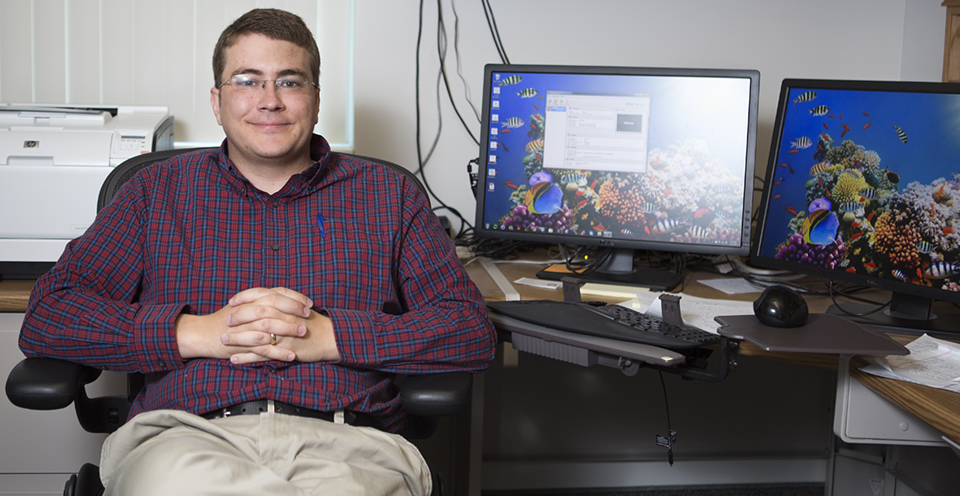
Some people like to count calories, but BYU professor Mark Transtrum took it to a whole new level.
Working with BYU chemistry professor Lee Hansen and local scientist Colette Quinn, Transtrum performed research using calorimeters—machines that measure the heat of chemical reactions.
“I have collaborators in a lot of different areas,” Transtrum said. “I’m interested in modeling complex systems, models that have lots of degrees of freedom, lots of parameters, and that describe collective behaviors of interacting components.”
Their research focused on the accuracy of parameters extracted from calorimetric data, specifically the instrument time constant—how long it takes for heat to get from the inside to the outside of the machine.
“That parameter is actually something a lot of people in the literature ignore; they just assume it’s instantaneous,” Transtrum said. “In order to do that you have to ignore part of the data, which raises all sorts of problems. . . . Depending on what choice you make, you get different answers.”
Their research, which was published in the scientific journal Methods, aimed to determine when the instrument time constant should be taken into consideration in order to keep calorimetric parameter estimates as accurate as possible.
“If you don’t do the analysis to account for not just the reaction . . . but also how that’s affected by the calorimeter and the experimental apparatus, you get the wrong answer,” Transtrum said. “You do all this work, you take data, and then you get an answer that’s just wrong.”
This research on calorimeters draws on Transtrum’s expertise in mathematical modeling.
“This is a field where I hadn’t applied any of our techniques for complex models. It’s mostly a way of adding another model to our repertoire,” Transtrum said. “The overarching theme of what I do is to distill a lot of the information that’s in the model . . . into something that’s simpler . . . and easier to understand.”
Transtrum hopes this research will help create more accurate parameters in calorimetric data that other scientists can build on.
“Usually it’s a stepping stone to something else,“ Transtrum said. “These parameters then get used in other calculations for biological or engineering purposes.”
Through Transtrum’s research, scientists can better determine if experimental conditions need to be corrected in order to have more accurate parameters.
“Hopefully people will take better account of the time response of instruments when they are fitting data,” Transtrum said. “Hopefully . . . they give a little more thought to corrections they have to make for their instruments and how the measurements have been taken.”
More Information on This Article
News and Events














